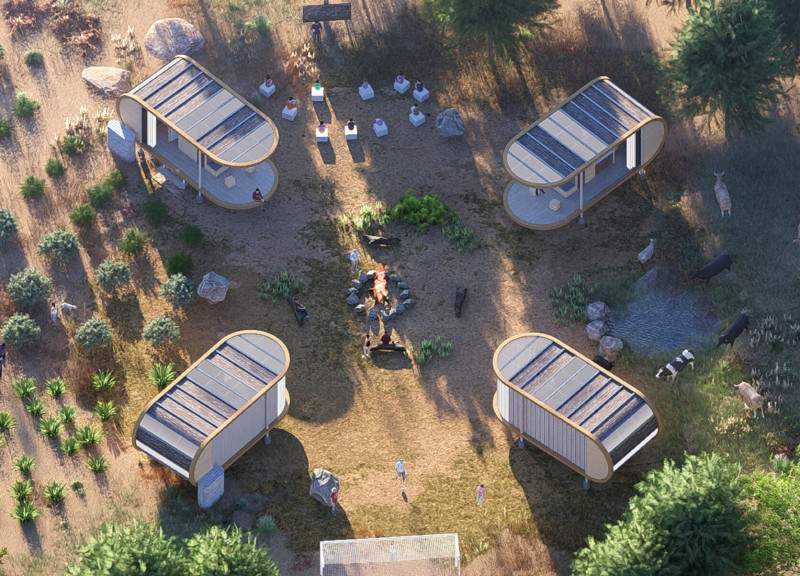5 key facts about this project
The architectural design features a comprehensive layout that serves multiple functions, catering to a diverse range of activities. The overall structure is organized to facilitate interactions among users while allowing for private spaces that promote focus and introspection. This balance underscores a fundamental principle of modern architecture: the creation of spaces that foster community while respecting individual needs.
Visually, the project is marked by its innovative façade, which showcases a combination of materials that work harmoniously together. The materials employed include glass, concrete, and wood, each selected not only for their aesthetic qualities but also for their sustainability and durability. The glass elements provide transparency and visual continuity with the exterior environment, inviting natural light to permeate the interior spaces. The use of concrete offers a robust structural framework, while wooden accents introduce warmth and texture, creating a welcoming atmosphere.
Beyond the material choice, the project is notable for its design approaches that prioritize sustainability and energy efficiency. The architecture incorporates passive design strategies such as natural ventilation, strategic shading, and the use of greenery, which mitigates energy consumption while enhancing the overall user experience. Green roofs and vertical gardens are integrated into the design, contributing to biodiversity and reducing the urban heat island effect. This commitment to sustainable practice is not merely a trend but rather a fundamental ethos that drives the design process.
The interior layout is carefully considered, with open spaces designed to promote collaboration and creativity, while quiet zones provide refuge for contemplation. The flow between spaces is intuitive, encouraging movement and interaction, while distinct zones cater to varying activities. Significantly, the architectural sections illustrate how natural light is harnessed throughout the day, showcasing the interplay between light and shadow and emphasizing the spatial qualities of each area.
An essential aspect of the project is its ability to adapt to the changing needs of its users. Flexible spaces are integrated into the design to accommodate varying functions, from workshops to social gatherings, showcasing a responsiveness to future demands. The architecture makes use of modular elements, reinforcing its versatility while ensuring that the core identity of the project remains intact.
In summary, this architectural project is a testament to the art of designing spaces that are not only functional but also reflective of their environment. The interplay of materiality, design strategies, and functional layout culminates in a cohesive whole that invites users to engage with their surroundings in meaningful ways. For those interested in further exploring the nuances of this project, including architectural plans, architectural sections, and architectural ideas that underline its design, a deeper dive into the project's presentation is encouraged.


 Will Oren,
Will Oren, 























